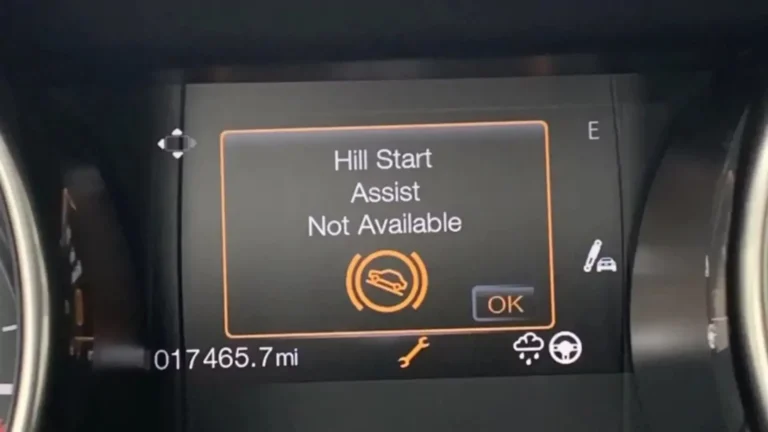Mitsubishi ASX Problems & Issues: Causes and Fixes [2025]
The Mitsubishi ASX has long been a popular choice for those seeking a compact SUV that combines style, versatility, and affordability. However, like any vehicle, it’s not without its quirks. If you’ve found yourself frustrated by recurring issues or simply want to stay ahead of potential problems before they escalate, you’re in the right place.
In this comprehensive guide, we’ll explore the most common troubles faced by ASX owners and arm you with practical solutions to keep your ride smooth and reliable. Buckle up as we navigate through troubleshooting tips and tricks that will ensure your journey in the ASX is as enjoyable as it was meant to be!
Introduction to the Mitsubishi ASX
The Mitsubishi ASX has carved out a niche for itself in the compact SUV market, appealing to drivers with its stylish design and practical features. However, like any vehicle, it isn’t without its share of troubles. From engine hiccups to electrical gremlins, many owners have encountered various Mitsubishi ASX problems that can turn their driving experience sour.
Common Mitsubishi ASX Problems
The Mitsubishi ASX, while a popular choice among compact SUVs, is not without its flaws. Engine issues frequently top the list of concerns. Owners often report unexpected stalling or rough idling, which can be frustrating.
Electrical problems also plague some models. Issues with dashboard lights malfunctioning or audio systems failing to respond are common complaints that affect daily driving experience.
Transmission troubles add another layer of complexity. Shifting gears may feel jerky at times, leading to an unsettling ride for drivers and passengers alike.
Suspension and handling concerns further contribute to the vehicle’s reputation. Some drivers have noted excessive noise when driving over bumps or uneven surfaces, detracting from comfort during longer trips.
These recurring problems highlight the importance of staying informed about potential pitfalls associated with this SUV model.
Engine issues
Engine issues in the Mitsubishi ASX can be a source of frustration for many drivers. Owners have reported problems ranging from excessive oil consumption to unexpected stalling.
A common complaint involves the engine light illuminating without any clear reason. This can leave you feeling anxious about potential repairs and expenses.
Another issue that has surfaced is related to the timing belt, which may wear out quicker than expected. Neglecting this component could lead to severe engine damage.
Many customers also experience difficulties with acceleration, impacting overall driving performance. These concerns often stem from faulty sensors or fuel delivery problems.
Regular check-ups are essential for catching these issues early before they escalate into major headaches down the road. Staying informed about these potential pitfalls can help owners maintain their vehicles more effectively.
Electrical problems
![Mitsubishi ASX Problems & Issues: Causes and Fixes [2025] 2 electrical problems](https://carcliniccentral.com/wp-content/uploads/2025/09/electrical-problems-1024x576.webp)
Electrical problems in the Mitsubishi ASX can manifest in various forms, causing frustration for owners. Common symptoms include dashboard warning lights flickering unexpectedly or malfunctioning infotainment systems. These issues not only affect usability but can also indicate deeper underlying problems.
Battery drainage is another prevalent concern. Drivers may find their vehicle struggling to start after sitting idle for a short period. This could be linked to a faulty alternator or parasitic draw from accessories that aren’t shutting down correctly.
Wiring faults might also arise, leading to intermittent failures of headlights or power windows. These electrical gremlins can create an unpredictable driving experience and often require thorough diagnostics.
Addressing these concerns early is crucial to prevent escalation into more significant issues that could impact overall performance and safety on the road.
Transmission troubles
Transmission troubles can be a significant concern for Mitsubishi ASX owners. Many drivers have reported issues with shifting gears smoothly. This can lead to frustrating experiences on the road.
![Mitsubishi ASX Problems & Issues: Causes and Fixes [2025] 3 transmission troubles from common mitsubishi asx problems](https://carcliniccentral.com/wp-content/uploads/2025/09/transmission-troubles-from-common-mitsubishi-asx-problems-1024x576.webp)
Some common signs include slipping gears, delayed engagement, or unusual noises during operation. These symptoms often suggest deeper issues within the transmission system.
Faulty sensors or worn-out components can contribute to these problems. If left unaddressed, transmission troubles may escalate and result in costly repairs down the line.
Regular inspections and timely servicing are crucial to catching these issues early. A proactive approach ensures that your vehicle remains reliable while providing peace of mind for every journey ahead.
Suspension and handling concerns
Suspension and handling issues often plague Mitsubishi ASX owners, impacting ride comfort and road stability. Many drivers report a noticeable drop in performance, especially on uneven surfaces.
One common complaint involves the vehicle’s ability to absorb bumps effectively. Some experience excessive bouncing or swaying during turns, which can be unnerving at higher speeds.
Additionally, worn-out bushings may contribute to a clunky feel while navigating corners. This affects not only safety but also driving enjoyment.
Drivers have noted that the steering can sometimes feel less responsive than expected. A lack of precision might lead to hesitation when changing lanes or making sharp maneuvers.
These concerns don’t always arise from design flaws; aging components play a significant role too. Regular inspections are essential for addressing these suspension dilemmas before they escalate into larger issues that could compromise overall vehicle safety.
Possible Causes of these Issues
Manufacturing defects can sometimes lead to persistent issues in the Mitsubishi ASX. These flaws may stem from poor quality control during production, affecting various components right out of the factory.
Wear and tear is another significant factor influencing performance. As with any vehicle, parts naturally degrade over time due to regular use. This deterioration can manifest as engine misfires or transmission slippage.
Lack of proper maintenance plays a crucial role too. Ignoring recommended service intervals for oil changes or fluid checks can exacerbate existing problems and create new ones. Neglecting routine inspections might mean catching minor issues before they escalate into major repairs.
Drivers who push their vehicles beyond standard limits may also experience increased strain on critical systems. Aggressive acceleration or frequent hard braking contributes to premature failure in areas like suspension and brakes, further complicating ownership experiences.
Manufacturing defects
Manufacturing defects can lead to significant issues in the Mitsubishi ASX. These flaws often stem from production errors or quality control lapses during assembly.
From faulty components to misaligned parts, these defects can manifest in various ways. Drivers may experience performance problems that significantly affect their driving experience.
Common examples include engine knocking or erratic electrical functions. These issues not only compromise vehicle reliability but also raise safety concerns for drivers and passengers alike.
Addressing manufacturing defects promptly is essential. Keeping an eye on recalls and warranty coverage can aid in identifying potential problems early on.
Awareness of such defects empowers owners to take action before minor annoyances escalate into major complications. Understanding this aspect helps ensure a smoother ownership journey with the Mitsubishi ASX.
Wear and tear
Wear and tear is an inevitable part of owning any vehicle, including the Mitsubishi ASX. As time passes, components begin to degrade due to regular use. This gradual decline can lead to a host of problems.
One common issue arising from wear and tear involves the suspension system. Over time, shocks and struts may lose their effectiveness, resulting in a less comfortable ride and compromised handling.
Brakes are another area susceptible to wear. Pads thin out with frequent use, leading to decreased stopping power if not regularly checked or replaced.
Tires also experience wear as they grip the road during daily commutes. Uneven tire wear could signal alignment issues or suspension troubles that need addressing promptly.
Regular inspections become essential for catching signs of wear early on before they evolve into more significant concerns that require complex repairs or replacements down the line.
Lack of proper maintenance
Lack of proper maintenance can lead to a host of issues for the Mitsubishi ASX. When owners neglect routine checks, small problems can escalate into costly repairs.
Regular oil changes are essential. Dirty oil leads to engine wear and reduced performance. Skipping this simple task might seem harmless at first, but it eventually affects longevity.
Tire maintenance is another area often overlooked. Under-inflated or worn tires not only reduce fuel efficiency but also affect handling and safety.
Braking systems need attention too. Ignoring squeaks or vibrations may result in more significant damage down the line, compromising both safety and functionality.
Lastly, fluid levels should be monitored consistently. Whether it’s coolant or transmission fluid, low levels can cause serious damage and leave you stranded without warning.
By prioritizing maintenance, you protect your investment and ensure smoother driving experiences with fewer unexpected surprises on the road.
Solutions for Addressing Each Problem
When tackling Mitsubishi ASX problems, the first step is to check if your vehicle is still under warranty. If it is, you might be eligible for repairs or recalls at no cost. Always keep an eye on official updates from Mitsubishi regarding these issues.
For minor concerns like electrical glitches or small engine troubles, some DIY fixes can save time and money. YouTube tutorials are a great resource for quick guides on simple repairs that don’t require professional tools.
However, serious problems often demand expert attention. If you experience transmission issues or significant engine faults, seeking help from certified mechanics is crucial. They can provide accurate diagnostics and ensure proper replacements are made using quality parts.
Investing in professional services may feel steep initially but will pay off by preventing further damage down the line. Prioritize solutions that suit both your budget and urgency level to maintain your Mitsubishi ASX effectively.
Seeking warranty coverage or recalls from Mitsubishi
If you’re experiencing issues with your Mitsubishi ASX, the first step is to check if your vehicle is still under warranty. Many problems may be covered, providing you peace of mind and financial relief.
Mitsubishi often issues recalls for known defects. It’s essential to stay informed about these announcements through their official website or by contacting local dealerships.
If a recall applies to your ASX, getting repairs done at an authorized service center can save you money and ensure that quality standards are met.
Documentation is key when seeking warranty coverage. Keep records of maintenance services and any previous complaints related to the issue at hand. This approach strengthens your case when negotiating with the dealership or manufacturer.
Don’t hesitate to reach out directly to Mitsubishi customer service for clarity on warranties or potential recalls affecting your specific model year.
DIY fixes for minor issues
When it comes to minor issues with your Mitsubishi ASX, tackling them yourself can save time and money. Start with basic tasks like replacing the air filter or wiper blades. These components are usually inexpensive and easy to change.
If you notice a warning light on the dashboard, consult your manual for guidance. Often, these lights indicate simple fixes, such as low oil levels or tire pressure.
For electrical quirks like flickering headlights or malfunctioning power windows, check fuses first. A blown fuse is an easy fix that can restore functionality without expensive repairs.
Lastly, keep an eye out for unusual noises when driving. Identify whether they originate from the engine bay or wheel area; this could point to something as simple as loose components needing tightening. Taking these small steps helps maintain your vehicle’s performance while boosting your confidence in DIY car care.
Professional repairs and replacements for major problems
When facing significant issues with your Mitsubishi ASX, professional repairs are often the safest route. Trained technicians possess specialized knowledge to accurately diagnose and address complex problems. Their expertise ensures that issues are resolved efficiently, minimizing the risk of further damage.
For engine troubles or transmission failures, relying on professionals can make a big difference. They have access to advanced diagnostic tools that help pinpoint specific malfunctions. This leads to targeted solutions rather than guesswork.
In cases where parts need replacement, certified mechanics use original equipment manufacturer (OEM) components. These parts guarantee compatibility and longevity, preserving the integrity of your vehicle.
Additionally, reputable repair shops offer warranties on their services. This provides peace of mind knowing that if an issue arises after repairs, you won’t be left in a bind financially. Investing in professional care helps maintain performance and safety while extending the lifespan of your ASX.
Related Articles:
Chevy 8 Lug Bolt Pattern
Stop Vehicle Leave Engine Running
Preventative Measures to Avoid Future Problems
Maintaining your Mitsubishi ASX is crucial for longevity. A regular servicing schedule can help catch minor issues before they escalate into major problems. Stick to the manufacturer’s recommendations for oil changes, fluid checks, and filter replacements.
Driving habits also play a significant role in vehicle health. Avoid aggressive acceleration and hard braking, as these actions put unnecessary stress on components. Smooth driving prolongs the life of your engine and transmission.
Pay attention to warning lights on your dashboard; they’re indicators that something needs checking. Addressing these alerts promptly can save you time and money down the road.
Lastly, keep an eye on tire pressure and tread depth. Properly inflated tires enhance fuel efficiency and handling while reducing wear on suspension parts. Regular inspections will ensure you’re always ready for the road ahead without surprises.
Regular maintenance and servicing schedule
Regular maintenance is essential for keeping your Mitsubishi ASX running smoothly. It’s not just about changing the oil; it encompasses a range of checks and services that can extend the vehicle’s life.
Establishing a servicing schedule tailored to your driving habits can make a significant difference. For instance, frequent short trips may require more regular coolant and brake fluid checks compared to highway driving.
Employing qualified technicians during these service appointments ensures that every aspect of your ASX receives attention. They can spot potential issues before they escalate into costly repairs.
Don’t overlook minor tasks like tire rotations or air filter changes. These small actions contribute significantly to overall vehicle efficiency and performance over time.
Investing in preventative care today means fewer headaches down the road, preserving both value and reliability for your Mitsubishi ASX.
Proper driving habits and care for the vehicle
Proper driving habits can significantly extend the life of your Mitsubishi ASX. Smooth acceleration and gentle braking reduce stress on various components, preserving engine efficiency and enhancing fuel economy.
Avoiding sudden maneuvers is equally important. Sharp turns or abrupt stops strain the suspension system, leading to premature wear. Instead, take your time when navigating corners and gradually adjust your speed.
Regularly monitoring tire pressure also plays a crucial role in vehicle care. Under-inflated tires lead to increased friction and reduced handling capabilities. Ensure you check them monthly for optimal performance.
Additionally, steer clear of heavy loads whenever possible. Excess weight affects handling dynamics and places unnecessary strain on the transmission system over time.
Lastly, listen closely for unusual sounds while driving—it could indicate underlying issues that need attention before they escalate into bigger problems down the road.
Conclusion
The Mitsubishi ASX has its share of challenges, making it essential for potential buyers and current owners to be aware of common issues. From engine troubles to electrical glitches, these problems can affect the overall driving experience. However, understanding possible causes—like manufacturing defects or lack of maintenance—can help in addressing them effectively.
Solutions range from seeking warranty coverage to DIY fixes for minor concerns. For more significant issues, consulting professionals is often the safest route. Regular servicing and mindful driving habits are crucial preventative measures that can save drivers from future headaches.
Frequently Asked Questions
What are the most common Mitsubishi ASX Problems?
The most reported Mitsubishi ASX Problems include engine stalling, excessive oil consumption, electrical faults, jerky transmission shifts, and suspension noise.
Are Mitsubishi ASX Problems costly to fix?
Some Mitsubishi ASX issues, like oil changes or fuse replacements, are inexpensive, but major issues such as transmission or engine repairs can be costly.
How can I prevent electrical issues in my ASX?
Routine battery checks, fuse inspections, and early diagnosis of wiring faults can reduce the risk of electrical malfunctions in the Mitsubishi ASX.
Does the Mitsubishi ASX suffer from transmission troubles?
Yes, many owners report slipping gears, delayed engagement, or rough shifting. Regular servicing and fluid changes can help minimize these issues.
What should I do if my ASX has a manufacturing defect?
Check warranty coverage or recalls with Mitsubishi. Dealerships often repair known defects at no cost if your model is affected.
![Mitsubishi ASX Problems & Issues: Causes and Fixes [2025] 4 Kevin Morgan](https://carcliniccentral.com/wp-content/uploads/2025/05/Kevin-Morgan-e1747133479795.webp)
Kevin Morgan is an ASE-certified automotive engineer and blogger with over 15 years of experience in vehicle systems design, performance testing, mechanics, and diagnostics. He is deeply passionate about automotive excellence. As a contributing author at CarClinicCentral, Kevin shares his expertise with enthusiasts, providing valuable market insights, updates, and trends.

![Mitsubishi ASX Problems & Issues: Causes and Fixes [2025] 1 mitsubishi asx problems](https://carcliniccentral.com/wp-content/uploads/2025/09/mitsubishi-asx-problems.webp)
![Mercedes B3 Service: Checklist & Cost [Detailed Guide] 2025 5 Mercedes B3 Service](https://carcliniccentral.com/wp-content/uploads/2025/07/Mercedes-B3-Service-768x432.webp)
![Power Steering Assist Fault: Signs, Causes, and Fixes [2025] 6 power steering assist fault](https://carcliniccentral.com/wp-content/uploads/2025/09/power-steering-assist-fault-768x432.webp)
![Mercedes A5 Service: Cost & Checklist [Detailed Guide] 2025 7 mercedes a5 service](https://carcliniccentral.com/wp-content/uploads/2025/08/mercedes-a5-service-768x432.webp)
![Chevy 8 Lug Bolt Pattern: Everything You Need To Know [2025] 8 chevy 8 lug bolt pattern](https://carcliniccentral.com/wp-content/uploads/2025/09/chevy-8-lug-bolt-pattern-768x432.webp)

